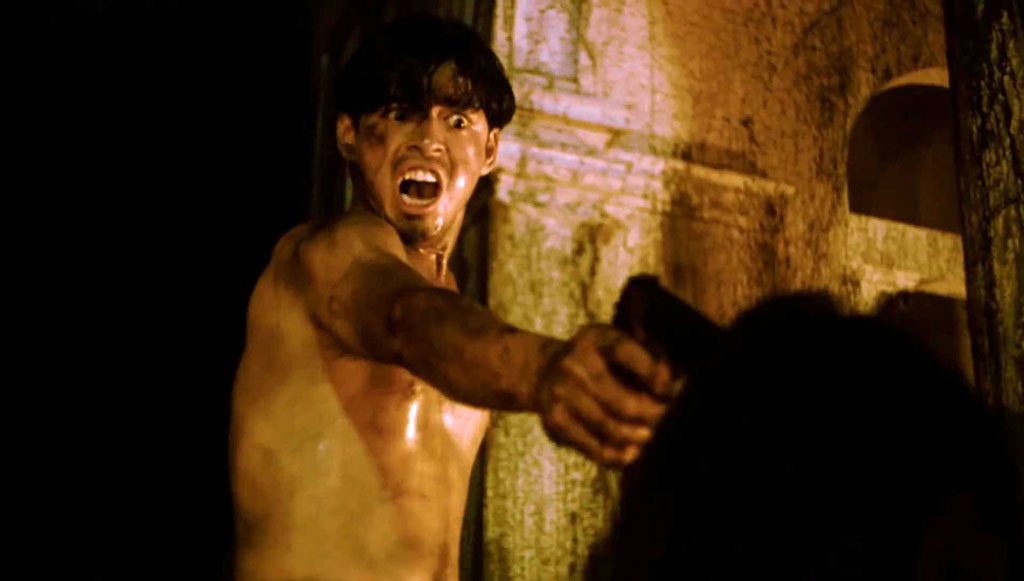Peque Gallaga’s Oro, Plata, Mata (1982) begins with an image of affluence, subverting Filipino cinema’s tendency to represent poverty. Long takes tour us around the Ojeda’s mansion as they celebrate their eldest daughter’s debut with their fellow hacienderos (wealthy and exploitative landowners). The attendees discuss World War II casually, between first kisses and salacious gossip; it’s talked about as if it were a mere nuisance to their games of mahjong. But then a phone rings and they are told that SS Corregidor, a seaplane tender-turned-refugee vessel for Filipinos escaping the bombings in Manila, has sunk. Worried screams immediately replace lively music and clusters form around the telephone. Their bourgeois bubble of ignorance bursts.
Oro, Plata, Mata is an unlikely home invasion film that expands the genre’s scope by framing the entirety of the Philippines as an invaded territory. Set shortly before, during, and after the Japanese occupation of the Philippines in the 1940s, the film follows two families—the Ojedas and the Lorenzos—as they are pushed away from the comforts of their haciendas and are driven toward the jungles in the island of Negros. The film’s title is taken from a Filipino architectural superstition, inherited from the Spanish, that says design elements that conclude in threes lead to bad luck. This is why Oro, Plata, Mata uses homes as symbols of the family’s descent in status and consciousness: their expansive cement mansion full of workers catering to their every whim is later replaced by a small rattan hut exposed to the forces of nature. The threat of violence is omnipresent in the film, but the families only witness the war from a slight remove—through fields of burning sugarcane, silhouettes of vehicles in the distant night, and the strewn mutilated bodies of guerilla soldiers. Rather than make sacrifices for the common good, the Ojedas and Lorenzos cling desperately to the remnants of their pre-war lives—mahjong games that drive them into debt, jewelry pieces no one will inherit, and religious figures that never answer their prayers. Gallaga creates a narrative epic from their suffering by alternating its violence with moments of comedy, languor, and sex; in turn, creating a complex and at times contradictory characterization of the Bacolod elite. His long scenes devoted to the mundane are swiftly and repeatedly shattered by the arrival of death.
Though Gallaga’s Oro, Plata, Mata was produced by the government-supported production company Experimental Cinema of the Philippines, it still manages to capture the dread of the Marcos dictatorship, as well as the political elite’s indifference toward the greater Filipino population. The most atrocious crimes depicted in the film are not from foreign invaders, but from the trusted servants and the wealthy inhabitants of the Ojedas’ and Lorenzos’ homes. The Lorenzo heir, Miguel (Joel Torre), is in a state of constant sexual repression and experiences emasculation throughout the film. This eventually ends up transforming his rescue mission into an indiscriminate killing spree against the poor. In Gallaga’s depiction of the social elite, violence brings about an irreversible change in the status quo, revealing the savagery and harsh truths that are so often concealed by money and pleasantries. Though the bodies and assets of the Ojedas and Lorenzos survive the war, they—and their homes—are no longer the same.
Oro, Plata, Mata screens this evening, May 17, and on May 27, at Spectacle Theater. Actor Joel Torres will join virtually for a Q&A following tonight’s screening.






